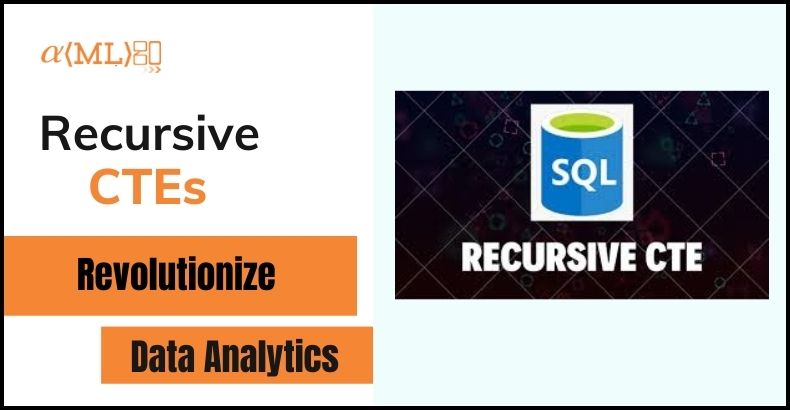
From organizational charts to bill of materials, Recursive CTEs can help you efficiently analyse hierarchical and recursive data in a variety of contexts.
A recursive CTE (Common Table Expression) is a SQL construct that allows a query to reference itself, enabling the query to perform hierarchical or recursive operations. Recursive CTEs are useful for modelling complex relationships within a dataset, such as organizational charts, network graphs, or nested categories.
Sql syntax for a recursive CTE:
WITH RECURSIVE cte_name (col1, col2, …) AS ( SELECT initial_query
UNION ALL
SELECT recursive_query
)
SELECT * FROM cte_name;
The cte_name:- is the name of the CTE, col1, col2, etc. are the column names, initial_query is the first part of the query that will be executed, and recursive_query is the part of the query that will be executed recursively. The UNION ALL keyword is used to combine the results of the initial and recursive queries. The SELECT statement at the end is used to retrieve the final result set.
Example :- usage of a recursive CTE to retrieve all the ancestors of a specific employee in an organizational chart:
Code
WITH RECURSIVE employee_hierarchy AS (
SELECT emp_id, emp_name, manager_id
FROM employees
WHERE emp_id = 10 — specific employee ID
UNION ALL
SELECT e.emp_id, e.emp_name, e.manager_id
FROM employees e
JOIN employee_hierarchy eh ON e.emp_id = eh.manager_id
)
SELECT * FROM employee_hierarchy;
In this example, the employees table has columns for emp_id, emp_name, and manager_id.
The initial query selects the information for the specific employee with ID 10. The recursive query joins the employees table with the employee_hierarchy CTE using the manager_id column to retrieve the information for the employee’s manager, and repeats this process for each subsequent manager until there are no more ancestors to retrieve.
Recursive CTEs are important in data analytics because they allow for efficient and scalable queries that can handle complex relationships within a dataset. They also provide a more intuitive and readable way of expressing hierarchical or recursive relationships compared to traditional SQL techniques.
Let’s analyse some used cases to understand it in a better way
Recursive CTEs are useful in a variety of data analytics use cases, especially those involving hierarchical or recursive relationships. Here are some examples:
Organizational charts: Recursive CTEs can be used to model an organizational chart, where each employee has a manager, and managers can have subordinates. With a recursive CTE, it is possible to retrieve all of an employee’s ancestors or descendants in the organization, or to generate a hierarchical report of the entire organization.
Nested categories: Recursive CTEs can be used to model a hierarchy of nested categories, where each category can have child categories. This is useful for e-commerce websites that sell products in multiple categories and subcategories. With a recursive CTE, it is possible to generate a hierarchical view of the category tree, retrieve all products within a particular category and its subcategories, or count the number of products in each category.
Network graphs: Recursive CTEs can be used to model a network graph, where nodes are connected to each other in a complex web of relationships. This is useful for social networks, transportation networks, or any other type of graph-like data. With a recursive CTE, it is possible to retrieve all of the nodes connected to a specific node, or to calculate the shortest path between two nodes.
Bill of materials: Recursive CTEs can be used to model a bill of materials, where each product is made up of components, which can in turn be made up of sub-components, and so on. This is useful for manufacturing or assembly operations, where it is important to understand the hierarchy of components that make up a finished product. With a recursive CTE, it is possible to retrieve all of the components needed to produce a specific product, or to calculate the total cost of a finished product based on the cost of its components.
In general, any situation where data is organized in a hierarchical or recursive manner can benefit from the use of a recursive CTE. By providing a concise and efficient way to model these relationships, recursive CTEs make it easier to write complex SQL queries and analyse large datasets.
